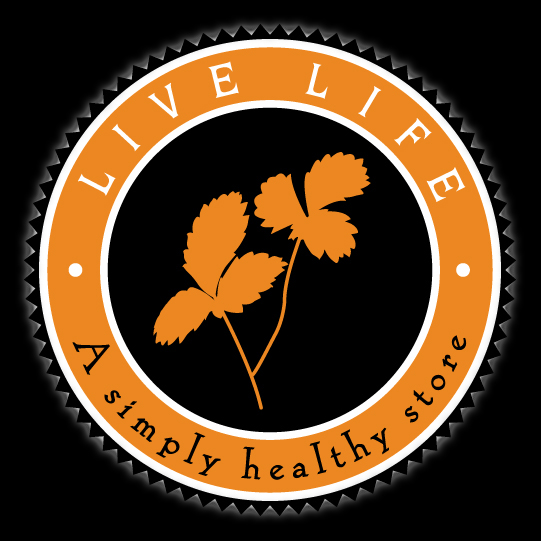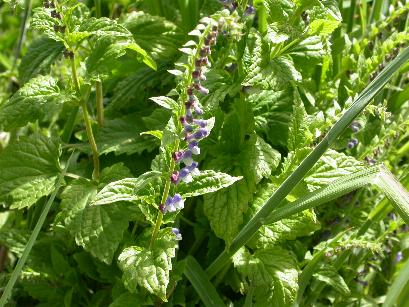FIBRE, ITS ESSENTIAL
05/01/23 12:07
Dietary fibre is essential for the health of the microbiome (gut bacteria) and therefore the human body. A largley undigestible carbohydrate, fibre comes in 2 main forms – soluble and insoluble. Fibre does not add to the kilojoule intake of the diet.
Soluble fibre is found in fruit and vegetables and some cereals like oats, barley, psyllium, linseed, slippery elm powder and legumes like beans, lentils, peas.
Insoluble fibre is more resistant to digestion, sometimes referred to as roughage. It is fermented by gut bacteria to produce fatty acids essential for the health of the mucous membrane of the gut wall. Foods like wheat and rice bran & skins of vegetables and fruits, nuts are rich in insoluble fibre and necessary to prevent constipation, adding bulk to the stool and speeding up bowel transit time.
The benefits of a high fibre diet include, lower levels of constipation, haemorrhoids, diverticular disease, bowel polyps, bowel cancer, and lower risk of heart disease, high blood pressure, gallbladder disease, obesity, diabetes
Foods that are high in fibre tend to be low in fat and have a lower glycaemic index and loading, so may be helpful in weight reduction and diabetic diets.
The Australian Heart Foundation recommends adults consume 30-35g daily, keep in mind some traditional human diets consume over 100g daily. Children should aim for 15-20g daily and elderly should focus on a high intake due to the slowing of the digestive system.
Check with your naturopathic practitioner as to what would be the best approach to slowly increase your dietary fibre intake. Keep in mind meat, eggs, fatty foods, fast foods and sugar are very low in fibre.
Some examples of fibre in food;
Wholemeal flour 14g fibre in 1 cup
Porridge, cooked 3.5g fibre in 1 cup
Muffin/cake 1g fibre
Prunes x6 4.5g fibre
Lentils 7g fibre in 1 cup
Call in and ask for a handout for more fibre info
Soluble fibre is found in fruit and vegetables and some cereals like oats, barley, psyllium, linseed, slippery elm powder and legumes like beans, lentils, peas.
Insoluble fibre is more resistant to digestion, sometimes referred to as roughage. It is fermented by gut bacteria to produce fatty acids essential for the health of the mucous membrane of the gut wall. Foods like wheat and rice bran & skins of vegetables and fruits, nuts are rich in insoluble fibre and necessary to prevent constipation, adding bulk to the stool and speeding up bowel transit time.
The benefits of a high fibre diet include, lower levels of constipation, haemorrhoids, diverticular disease, bowel polyps, bowel cancer, and lower risk of heart disease, high blood pressure, gallbladder disease, obesity, diabetes
Foods that are high in fibre tend to be low in fat and have a lower glycaemic index and loading, so may be helpful in weight reduction and diabetic diets.
The Australian Heart Foundation recommends adults consume 30-35g daily, keep in mind some traditional human diets consume over 100g daily. Children should aim for 15-20g daily and elderly should focus on a high intake due to the slowing of the digestive system.
Check with your naturopathic practitioner as to what would be the best approach to slowly increase your dietary fibre intake. Keep in mind meat, eggs, fatty foods, fast foods and sugar are very low in fibre.
Some examples of fibre in food;
Wholemeal flour 14g fibre in 1 cup
Porridge, cooked 3.5g fibre in 1 cup
Muffin/cake 1g fibre
Prunes x6 4.5g fibre
Lentils 7g fibre in 1 cup
Call in and ask for a handout for more fibre info
Xmas Times
17/12/22 13:56
Many thanks again for supporting LiveLife through 2022, it is our 22nd year of continual operation.
Xmas hours:
Closed 25th December till 3rd January 2023 inclusive
Re-open 4th December 2023
Merry Christmas and Happy New Year.
Xmas hours:
Closed 25th December till 3rd January 2023 inclusive
Re-open 4th December 2023
Merry Christmas and Happy New Year.
PCR
29/11/22 11:25
Polymerase Chain Reaction
Kary Mullis (1944-2019) was an American biochemist who invented the Polymerase Chain Reaction technique. In 1993 he won the Nobel Prize in Chemistry with colleague Michael Smith for the invention of the PCR technique. Analysing DNA requires quite a large amount of DNA. The PCR technique takes a small amount of DNA and copies it into larger quantities over a short period of time.
By applying heat, the DNA molecule’s two strands are separated and the DNA building blocks that have been added are bonded to each strand. With the help of the enzyme DNA polymerase new DNA chains are formed and the process can then be repeated. The majority of PCR methods rely on thermal cycling. Almost all PCR applications employ a heat stable DNA polymerase such as Taq polymerase, an enzyme originally isolated from the thermophilic Thermus aquaticus. These heat resistant enzymes that are a key component in PCR were discovered in the 1960’s as a product of a microbial life form that lived in the superheated waters of Yellowstone’s Mushroom Spring. To follow is some points on what PCR is useful for and what it can’t do:
PCR is intended to identify substances qualitatively, but by its very nature is unsuited for estimating numbers.
The tests, can detect genetic sequences of viruses, but not viruses themselves, cannot determine whether the individual tested is infectious.
PCR does not indicate that the virus is fully intact and infectious.
PCR presence of a virus doesn’t tell us that virus is involved in the disease process, see commensalism.
Like all enzymes, DNA polymerases are also prone to error, which in turn causes mutations in the PCR fragments that are generated.
Another limitation of PCR is that even the smallest amount of contaminating DNA can be amplified resulting in misleading or ambiguous results.
Questions to be asked with regards PCR, at what point does amplification start creating false positives?
Now ask yourself why are you taking a PCR “test”.
Kary Mullis (1944-2019) was an American biochemist who invented the Polymerase Chain Reaction technique. In 1993 he won the Nobel Prize in Chemistry with colleague Michael Smith for the invention of the PCR technique. Analysing DNA requires quite a large amount of DNA. The PCR technique takes a small amount of DNA and copies it into larger quantities over a short period of time.
By applying heat, the DNA molecule’s two strands are separated and the DNA building blocks that have been added are bonded to each strand. With the help of the enzyme DNA polymerase new DNA chains are formed and the process can then be repeated. The majority of PCR methods rely on thermal cycling. Almost all PCR applications employ a heat stable DNA polymerase such as Taq polymerase, an enzyme originally isolated from the thermophilic Thermus aquaticus. These heat resistant enzymes that are a key component in PCR were discovered in the 1960’s as a product of a microbial life form that lived in the superheated waters of Yellowstone’s Mushroom Spring. To follow is some points on what PCR is useful for and what it can’t do:
PCR is intended to identify substances qualitatively, but by its very nature is unsuited for estimating numbers.
The tests, can detect genetic sequences of viruses, but not viruses themselves, cannot determine whether the individual tested is infectious.
PCR does not indicate that the virus is fully intact and infectious.
PCR presence of a virus doesn’t tell us that virus is involved in the disease process, see commensalism.
Like all enzymes, DNA polymerases are also prone to error, which in turn causes mutations in the PCR fragments that are generated.
Another limitation of PCR is that even the smallest amount of contaminating DNA can be amplified resulting in misleading or ambiguous results.
Questions to be asked with regards PCR, at what point does amplification start creating false positives?
Now ask yourself why are you taking a PCR “test”.
Immunity in a viral world
21/07/22 13:38
14/06/22 10:59
new terms and thinking
https://journals.asm.org/doi/full/10.1128/IAI.68.12.6511-6518.2000
https://journals.asm.org/doi/full/10.1128/IAI.68.12.6511-6518.2000
Pleomorphism, what is it?
11/05/22 14:16
“If Pleomorphism were correct, scientific investigation of bacteria would be an impossibility. One grasps one’s head to make sure it is still on the shoulders. The whole structure of our science threatens to collapse.” F. Loehnis, 1922
Science can and does change/evolve, old ways are replaced, theories once seen as unsurmountable are found wanting and replaced, new paradigms emerge. A revolution in biology is emerging, beware of the current climate of intransigence in science, its not healthy and certainly won’t give us the answers moving into a new scientific paradigm.
Science can and does change/evolve, old ways are replaced, theories once seen as unsurmountable are found wanting and replaced, new paradigms emerge. A revolution in biology is emerging, beware of the current climate of intransigence in science, its not healthy and certainly won’t give us the answers moving into a new scientific paradigm.
pH regulation
03/05/22 16:56
The pH (acid/alkaline balance) of the body is only regulated by minerals. When not enough alkaline minerals are entering into our biology, bones potentially become a source to maintain blood pH. Demineralisation is a common problem in western civilisation particularly since industrialisation. A fully charged “battery” as per illustration is the ideal place to be to maintain normal homeostatic function. This is poorly understood by the lay population and consequently is becoming a major issue with a host of illnesses arising due to this latent acidosis or even compensated acidosis. One sure way to help rectify this issue is re-mineralisation. Check with your naturopathic practitioner to see what is the best approach for you.


Mast Cells and Immunity
27/04/22 10:06
Mast cells are granulocytes that discharge histamines, cytokines, leukotrienes and prostaglandins when triggered by specific stimuli like allergens. Mast cells are present in most tissues including gut, lung, brain and connective tissue.
A dysregulated breakdown of mast cells can result in allergy/hyper-inflammation. Mast cells have been suspected to play a role in the severity of some viral infections.
Viruses and artificial inoculation that are capable of triggering mast cells via their ACE2 (angiotensin-converting enzyme 2) receptor, increase the risk of svere outcomes particularly people with underlying mast cell destabilization due to environmental exposures, chronic inflammation or pre-exisitng conditions such as dysbiosis.
Mast cells can activate spontaneously in a Vitamin D deficient environment. Glyphosate exposure also increases the number of mast cells in the gastrointestinal tract.
Chronic inflammation depletes Vitamin D
Maintaining adequate plasma levels of Vitamin D is not simply a matter of dietary intake and sun exposure, but also depends upon the reduction in pollution exposure and a healthy microbiome(regular ferment with a high gene count-prevotella enterotypes).
Stabilisation of mast cells requires maintaining a healthy gut barrier to prevent inflammatory endotoxins like LPS which are produced by certain strains of gut bacteria from entering the bloodstream. This can also cause Vitamin D degradation. Dysregulated mast cells can pose a challenge to healing the gut as they contribute to the gut barrier dysfunction.
Mast cells play a central role in initiating and maintaining inflammation, particularly in allergies and asthma. Although mast cells can be found in all well vascularised tissues, they are predominantly found in tissues where our body makes contact with the outside world. These tissues include the gastrointestinal tract, upper and lower airways, and the skin.
Reactions to food allergens are typically the result of intestinal mast cell activation.
Dietary fibre, especially polysaccharides and oligosaccharides and metabolites, i.e., short chain fatty acids can regulate mast cell function.
Diets high in fibre can prevent sensitization of mast cells either by inhibiting allergen digestion or by up regulating galactin-9 expression, thus blocking the formation of IgE antigen complexes.
A dysregulated breakdown of mast cells can result in allergy/hyper-inflammation. Mast cells have been suspected to play a role in the severity of some viral infections.
Viruses and artificial inoculation that are capable of triggering mast cells via their ACE2 (angiotensin-converting enzyme 2) receptor, increase the risk of svere outcomes particularly people with underlying mast cell destabilization due to environmental exposures, chronic inflammation or pre-exisitng conditions such as dysbiosis.
Mast cells can activate spontaneously in a Vitamin D deficient environment. Glyphosate exposure also increases the number of mast cells in the gastrointestinal tract.
Chronic inflammation depletes Vitamin D
Maintaining adequate plasma levels of Vitamin D is not simply a matter of dietary intake and sun exposure, but also depends upon the reduction in pollution exposure and a healthy microbiome(regular ferment with a high gene count-prevotella enterotypes).
Stabilisation of mast cells requires maintaining a healthy gut barrier to prevent inflammatory endotoxins like LPS which are produced by certain strains of gut bacteria from entering the bloodstream. This can also cause Vitamin D degradation. Dysregulated mast cells can pose a challenge to healing the gut as they contribute to the gut barrier dysfunction.
Mast cells play a central role in initiating and maintaining inflammation, particularly in allergies and asthma. Although mast cells can be found in all well vascularised tissues, they are predominantly found in tissues where our body makes contact with the outside world. These tissues include the gastrointestinal tract, upper and lower airways, and the skin.
Reactions to food allergens are typically the result of intestinal mast cell activation.
Dietary fibre, especially polysaccharides and oligosaccharides and metabolites, i.e., short chain fatty acids can regulate mast cell function.
Diets high in fibre can prevent sensitization of mast cells either by inhibiting allergen digestion or by up regulating galactin-9 expression, thus blocking the formation of IgE antigen complexes.
Easter Trading Times
13/04/22 10:51
Easter trading times 2022
Good Friday Closed
Easter Saturday 10am - 2pm
Easter Sunday Closed
Easter Monday Closed
Easter Tuesday Closed
Wednesday 9am-5:30pm
Have a safe and enjoyable Easter
Good Friday Closed
Easter Saturday 10am - 2pm
Easter Sunday Closed
Easter Monday Closed
Easter Tuesday Closed
Wednesday 9am-5:30pm
Have a safe and enjoyable Easter
John Hunter
12/04/22 10:05
John Hunter 1728-1795
British Vitalist physician
1. every disease is specific
2. every disease is of the whole person, so that 2 different “diseases” cannot co-exist in the same individual.
3. that medicines act by their “stimulating” power on the organism, not by producing evacuation or by neutralising toxins.
Empirical advice from Hunter to Edward Jenner: “Don’t think, try; be patient, be accurate.
Knowledge of medicines arises out of experience and practice, not out of theory.
British Vitalist physician
1. every disease is specific
2. every disease is of the whole person, so that 2 different “diseases” cannot co-exist in the same individual.
3. that medicines act by their “stimulating” power on the organism, not by producing evacuation or by neutralising toxins.
Empirical advice from Hunter to Edward Jenner: “Don’t think, try; be patient, be accurate.
Knowledge of medicines arises out of experience and practice, not out of theory.
Short Chain Fatty Acids
18/01/21 14:47
SCFAs are produced as the result of microbial fermentation in the gut, absorbed by coloncytes through active transport over the apical membrane. Some SCFAs are consumed by the colonocytes as an energy source while the remaining enter the bloodstream. Amounts produced in the gut are directly related to dietary fibre intake. Higher levels are associated with reduced risk for various diseases, such as inflammatory bowel diseases, diabetes and intestinal cancer. Could well be the missing link in the gut/brain axis, which might exert effects on mental health and behaviour.
Active Elements
14/01/21 09:54

Active Elements are an excellent way of upping your mineral intake. In this day and age of industrialised food production we may well be experiencing mineral deficiencies. This can be seen in symptoms that have there basis in latent acidosis, where the mineral intake is insufficient to deal with pH den,manes of the body.








